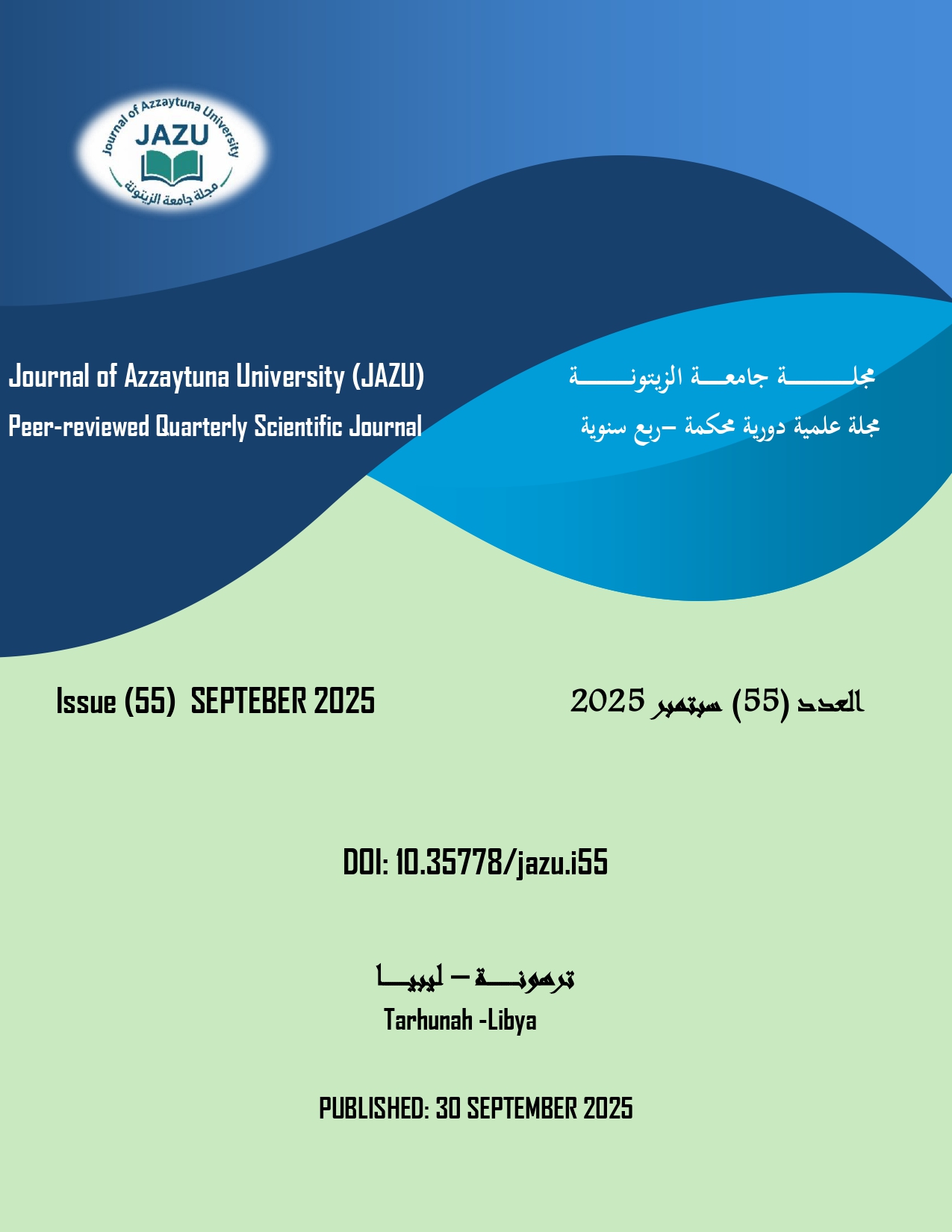Disturbance Rejection Control Approach for Rotating Antenna
DOI:
https://doi.org/10.35778/jazu.i55.a561الكلمات المفتاحية:
محركات التيار المستمر، الهوائي، مراقب الحالة الممتدة، التحكم النشط في رفض الاضطرابالملخص
في هذا العمل، اقترحنا تصميم نظام له نفس فكرة تشغيل الرادار تقريبًا. تتم معالجة تحديات التحكم التمثيلي في العمليات باستخدام تقنية تحكم جديدة تسمى التحكم النشط في رفض الإزعاج (ADRC) لحل مشكلات التحكم في التتبع. هناك متغير إضافي للحالة، يتم حسابه وضبطه في الوقت الفعلي، وهو الاضطراب والديناميكيات غير المقاسة المتعلقة بالهوائي. يتم التعامل مع هذه الاضطرابات والديناميكيات غير المقاسة في إطار عمل ADRC. يتم تطبيق وحدة التحكم هذه لدفع الهوائي وتدويره إلى المواقع المناسبة في ثنائي الأبعاد في الوقت الفعلي باستخدام محركين يعملان بشكل مستقل بالتيار المستمر. يقوم ADRC بتقدير الاضطرابات الداخلية والخارجية باستخدام مراقب الحالة الموسع (ESO). تم إجراء دراسة محاكاة على وحدتي تحكم ADRC ومحركات DC والتي تعطي نتائج ممتازة وتدفع الهوائي بنجاح إلى الموضع المطلوب في حالتين؛ بدون اضطرابات ومع الاضطرابات الخارجية او الطبيعية.
التنزيلات
المراجع
[1] Han , J. (1998). Auto-Disturbance Rejection Control and its Applications. Control and Decision, Vol.13, No.1. (In Chinese).
[2] Han , J. (1999). Nonlinear Design Methods for Control Systems. Proc. of the 14th IFAC World Congress, Beijing.
[3] Gao, Z., Huang, Y., & Han, J. (2001). An Alternative Paradigm for Control System Design. Proc. of the 40th IEEE Conference on Decision and Control. pp 4877-4882.
[4] Gao, Z. (2003). Scaling and Parameterization Based Controller Tuning. Proc. of the American Control Conference, pp. 4989-4996.
[5] Gao, Z. (2006). Active Disturbance Rejection Control: A Paradigm Shift in Feedback Control System Design. Proc. of the American Control Conference, Minneapolis, pp. 2399-2405.
[6] Gao, Z., Hu, S., & Jiang, F. (2001). A novel motion control design approach based on active disturbance rejection. in Proceedings of the IEEE Conference on Decision and Control, pp. 4877-4882.
[7] Zheng, Q., & Gao, Z. (2006). Motion control opmitimization: problem and solutions. Interntional Journal of Intelligent control and systems, vol. 10, no. 4, pp. 269-276.
[8] Su, Y. X., Duan, B. Y., Zheng, C. H., Zhang, Y. F., Chen, G. D., &Mi, J. W.(2004). Disturbance- rejection high-precision motion control of a Stewart Platform. IEEE Transactions on Control System Technology, vol. 12, no. 3.
[9] Huang, Y., Xu, K., & Han, J. (2001). Flight control design using extended state observer and non-smooth feedback. In Proceedings of the IEEE Conference on Decision and Control, pp. 223-228.
[10] Sun, B., &Gao, Z. (2005). A DSP-based active disturbance rejection control design for a 1KW H-bridge DC-DC power converter. IEEE Trans. on Industrial Electronics, vol. 52, no. 5, pp. 1271-1277.
[11] Hou, Y., Gao, Z., Jiang, F., & Boulter, B. (2001). Active disturbance rejection control for web tension regulatio. Proceedings of the 40th IEEE Conference on Decision and Control, pp. 4974-4979.
[12] Nise, N. S. (2000). Control System Enginerring (6th Edition). John Wiley & Sons.
[13] Ahmed, M., Mohd Noor, S. B., Hassan, M. K., & Che Soh, A. B. (2014). A Review of Strategies for Parabolic Antenna Control. Australian Journal of Basic and Applied Sciences, vol. 8, pp. 135-148.
[14] Alooa, L. A., Kihatob, P. K., & Kamauc, S. I. (2016). DC Servomotor-based Antenna Positioing Control System Design using Hybrid PID-LQR Controller. European International Journal of Science and Technology, vol.5, pp. 17-31.





